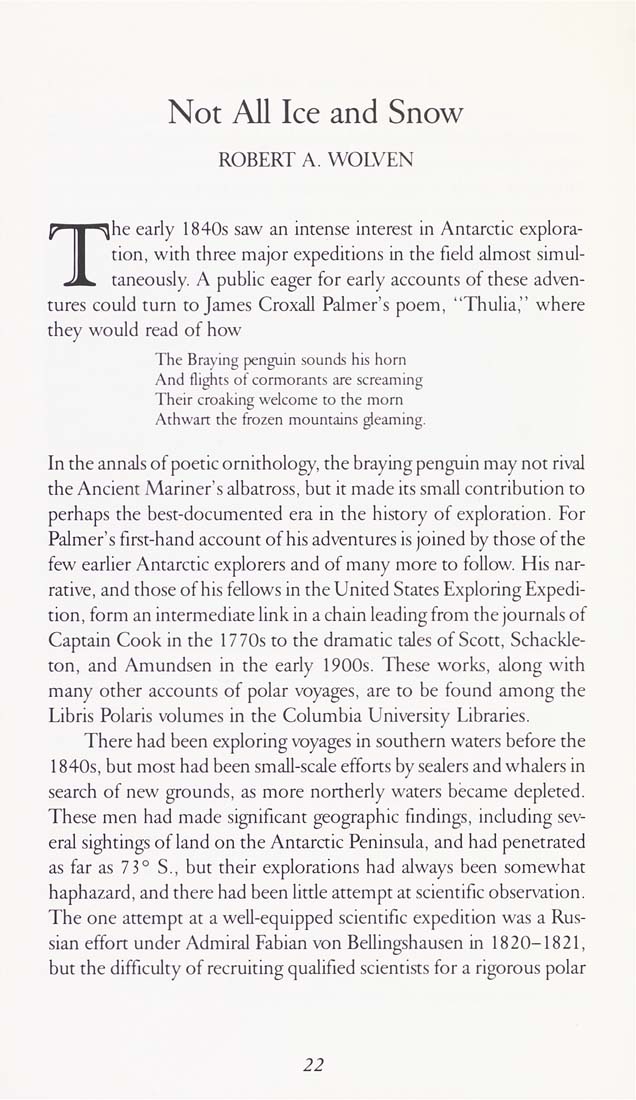Columbia Library columns (v.38(1988Nov-1989May))
(New York : Friends of the Columbia Libraries. )
|
||
|
|
|
|
| v.38,no.2(1989:Feb): Page 22 |

Not All Ice and Snow ROBERT A. WOLVEN The early 1840s saw an intense interest in Antarctic explora¬ tion, with three major expeditions in the field almost simul¬ taneously. A public eager for early accounts of these adven¬ tures could turn to James Croxall Palmer's poem, "Thulia," where they would read of how The Braving penguin sounds his horn And flights of cormorants are screaming Their croaking welcome to the morn Athwart the frozen mountains gleaming. In the annals of poetic ornithology, the braying penguin may not rival the Ancient Mariner's albatross, but it made its small contribution to perhaps the best-documented era in the history of exploration. For Palmer's first-hand account of his adventures is joined by those ofthe few earlier Antarctic explorers and of many more to follow. His nar¬ rative, and those of his fellows in the United States Exploring Expedi¬ tion, form an intermediate link in a chain leading from the journals of Captain Cook in the 1770s to the dramatic tales of Scott, Schackle- ton, and Amundsen in the eariy 1900s, These works, along with many other accounts of polar voyages, are to be found among the Libris Polaris volumes in the Columbia University Libraries, There had been exploring voyages in southern waters before the 1840s, but most had been small-scale efforts by sealers and whalers in search of new grounds, as more northerly waters became depleted. These men had made significant geographic findings, including sev¬ eral sightings of land on the Antarctic Peninsula, and had penetrated as far as 73° S,, but their explorations had always been somewhat haphazard, and there had been little attempt at scientific observation. The one attempt at a well-equipped scientific expedition was a Rus¬ sian effort under Admiral Fabian von Bellingshausen in 1820-1821, but the difficulty of recruiting qualified scientists for a rigorous polar 22 |
| v.38,no.2(1989:Feb): Page 22 |







